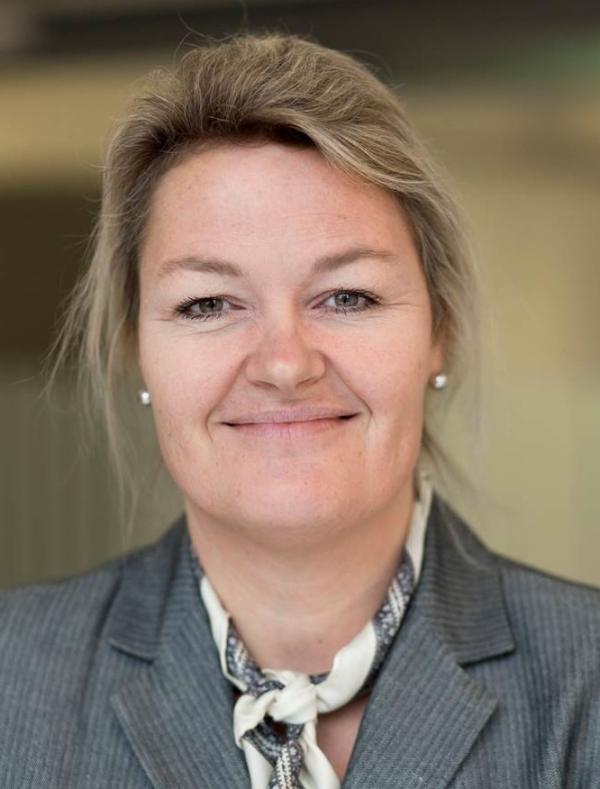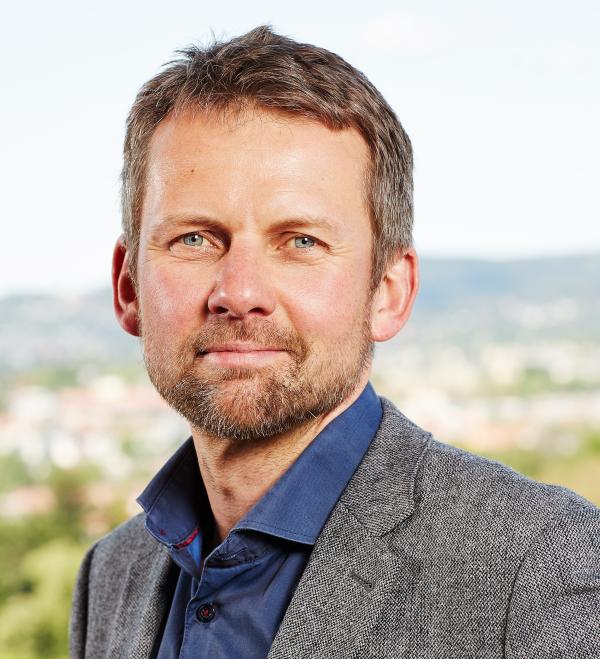
Innovation is a male-dominated realm. But if innovation is to succeed in addressing the challenges facing society, everyone needs to take part.
In Norway, it is predominantly men who file patents and launch companies. Financial support for industry-oriented research and innovation is therefore allocated mainly to men. There is widespread agreement that things should be different, but what will it take to change them? We posed the question to researchers and leaders.
A need for women entrepreneurs
“I believe it will broaden our results if we achieve better gender balance in innovation. There is a lot of knowledge, expertise and opportunities we won’t have access to without women entrepreneurs,” says Toril A. Nagelhus Hernes, Pro-Rector for Innovation at the Norwegian University of Science and Technology (NTNU).
She also heads NTNU’s efforts to promote gender equality and diversity.
Universities play a vital role in Norway’s ecosystem for innovation. In 2019, NTNU submitted two reports to the Norwegian Ministry of Education and Research on the impact of NTNU’s innovation activities on Norway’s economy and value creation.
The reports were part of the follow-up to the development agreement with the ministry that NTNU, along with Norway’s other universities and university colleges, has drawn up. Each institution commits to satisfying certain quality objectives in its agreement.
The two NTNU reports are designed to strengthen the knowledge base for innovation activities and to devise indicators for quantification and visibility.
“The second report, which is a review of the literature on how the universities promote innovation, concludes that this takes place through three main channels. The first is via direct research collaboration with the private and public sectors. The second is via innovation carried out by students and employees who commercialize their ideas. The third is indirect, through the way we educate our students,” says Hernes.
“Not a female-friendly system of measurement”
Part of the reason for the substantial gender imbalance may be that the system for quantifying the entire spectrum of innovation is poor. For example, research indicates that innovation is so strongly tied to masculine stereotypes that innovation carried out by women is often not counted as such.
Espen Solberg, Head of Research at the Nordic Institute for Studies in Innovation, Research and Education (NIFU), carried out some of the work underlying the NTNU reports. He says that a narrow understanding and measurement of the role of universities in innovation processes has been applied:
“The typical indicators of innovation have been whether the process produces patents, licences and company start-ups, or whether researchers publish articles together with partners from the business sector. International rankings of innovative universities emphasize measurements of this kind.”

“This has not been a female-friendly system of measurement – it favours technology and the entrepreneurial environment, where we know that women are underrepresented,” he says.
Innovation seen more broadly now
But that is an outdated understanding of the innovation concept. Today, innovation researchers define the term far more broadly as encompassing, among other things, the public sector and new ways of thinking that do not necessarily lead to a marketable product or increased economic growth.
“From this perspective, a much greater proportion of the universities’ activities can be seen as innovation-related. And this expands the selection of relevant measurement tools. Innovation may involve collaborating with other stakeholders, or different types of knowledge flow that benefit society at large,” says Solberg.
The most recent edition of the Oslo Manual, the OECD guide for measuring innovation, largely captures the up-to-date understanding of innovation. The OECD defines an innovation as “a new or improved product or process (or combination thereof) that differs significantly from the unit’s previous products or processes and that has been made available to potential users (product) or brought into use by the unit (process).” Innovation activities are the activities carried out with the aim of bringing about an innovation.
“This new understanding of innovation is broader than what most people perceive as innovation. We still encounter many people who think in terms of products, technology and companies. Philosophy experts are not used to seeing themselves as drivers of innovation, since they seldom register patents or start-up companies. But they may well have contributed to discussions on the ethical aspects of technology, or helped to develop new legislative bills, and in this way they too are involved in innovation,” says Solberg.
Enhances gender balance
Much of what universities do is not innovation in itself, but rather activities that may contribute to and create a culture for innovation. Many of these activities can be measured, such as various forms of knowledge transfer or innovation-promoting elements in study programmes.
“In some cases, it is possible to measure the degree to which something has led to changes for society,” says Solberg, pointing to the example of students from the NTNU Faculty of Architecture and Design who helped to develop a new playground in Trondheim using scientific knowledge about how children play.
“In the old days we would not have considered this innovation because there is no product to earn money from. But now it is defined as innovation. It is possible to measure this as participation in architectural contests or artistic creativity, for instance.”
An indirect consequence of this expanded innovation concept is better gender balance, believes Solberg.
“Given that gender balance between disciplines is so skewed today, it will obviously be corrective to apply the term innovation to “softer” disciplines and the public sector. In the health sector, for example, a system is now under development to identify good ideas and channel them through a system towards implementation. It will be a kind of systematized shortcut to innovation. The sector is so large that this could have major impacts.”
“Innovation is not rewarded”
Toril Nagelhus Hernes of NTNU agrees it is important to highlight the full breadth of innovation.
“Another important point to understand is that innovation means different things within different subject areas. For example, entrepreneurs from the social science community face a different set of challenges and opportunities compared to entrepreneurs in technological fields. Social scientists may place more emphasis on services innovation than on product innovation.”
Hernes also points out that innovation is not necessarily the primary goal for academics.
“Here at NTNU, about 25 per cent of the professors are women, and many of our associate professors are looking to qualify for full professorship. But the criteria for promotion do not necessarily include weighting of innovation activities, so pursuing those activities can feel like a sidetrack. This is why it is important to consider a wide array of solutions for determining qualifications,” she says.
Many women want to, few succeed
A report submitted in spring 2019 commissioned by Innovation Norway showed that women do not lack drive: women comprise 45 per cent of people wanting to establish their own company (based on figures from 2015).
But many end up falling by the wayside, however, and women accounted for only 30 per cent of those who actually started up a company. Furthermore, of the few companies still in operation after five years, only 19 per cent involve women entrepreneurs.
“We are aware that women who begin studying here may be looking to become entrepreneurs, so how can we help them to achieve this,” says Hernes.
“NTNU currently educates about 400 doctoral fellows per year, but not all of them will remain in academia. Most of them are headed for the labour force, and there is great potential to enable them to launch their own companies. This is why we have special initiatives at the doctoral level for providing them with more entrepreneurial knowledge and skills. One example is the School of Health Innovation, a collaborative effort with the University of Oslo and the Karolinska Institutet for students in the health and technology disciplines. Another is the Ocean School of Innovation, designed to encourage ocean-related innovation.”
Innovation from all subject fields
When she took the helm as pro-rector for innovation, Hernes initiated a review of NTNU’s entire ecosystem for innovation and commercialization. One result for closing existing gaps was the Strategic Programme for Knowledge-based Innovation (SKI), which appointed 15 “innovation managers” to help staff to transform research results into innovation and to highlight innovation activities. There are innovation managers from each faculty, and one-third of them are women.
“A cross-cutting programme like this provides new opportunities for innovation and gives women a shared platform that focuses on innovation activities and promotes sharing of experience.”
Nevertheless, the fact remains that the entrepreneurs educated at NTNU – including women – are still mainly within the technological disciplines. Hernes believes this is why it is important to continue promoting measures to improve gender balance within all subject fields. NTNU has a longstanding tradition of measures to increase recruitment of and retain women students in the technological disciplines, and has now begun similar measures to raise the proportion of men in the health disciplines.
“We also want more women entrepreneurs from the social sciences and humanities, where the thinking has not traditionally tended towards innovation and commercialization in the same way. These disciplines not only have a different understanding of innovation, but many of them also have a greater number of women employees and students. This means there is major potential for increasing female entrepreneurship,” she says.
Democratization requires gender perspectives

Last year the Research Council of Norway commissioned a report on how to improve Norwegian innovation policy at a time when greater emphasis must be given to addressing major societal challenges. The report recommends that Norway think along broader lines and involve as many societal stakeholders as possible in innovation efforts. It is no longer enough to facilitate research and innovation. Steps must also be taken to identify the challenges that need to be addressed and then invite society as a whole to solve them collectively.
This contrasts with previous innovation policies, which have focused on injecting funding into apparently strong specialist communities in the hope that something usable emerges on the other end.
Jesper W. Simonsen, Executive Director of the Division for Society and Health at the Research Council, points out that gender perspectives and gender balance will be a key consideration in the reshaping of research policy.
“The major societal challenges we are facing call for new solutions and the application of new knowledge. The Research Council has been working actively and systematically over the past years to strengthen innovation in the public sector and expand user involvement in research. This requires a focus on who the users are and how to mobilise those who will be seeking the new solutions. This will lead to a democratization of research, which will have to be more widely targeted towards the situation of the users,” he says.
According to Simonsen, it is essential to involve the business sector since that is where new ideas often originate, and because the societal challenges will largely shape the markets. The Research Council uses a variety of models to link together the business sector with public entities in order to promote innovation. At the same time, greater importance must be attached to social responsibility. It is important to consider how research and innovation addresses the impacts on society.
“We are still only at the starting line with this, but it will play an important role in what the Research Council prioritizes when we support research and innovation. Gender perspectives are essential to understanding the impacts and potential of research and innovation. Gender perspectives are a key assessment criterion when we review grant applications, and we are working systematically to encourage the inclusion of gender perspectives more consistently. It is also critical who the participants in research are. We need to involve more women in business sector research, and make sure that women are well represented in user involvement relating to research activities. I believe there is a good framework already in place,” says Simonsen.
This article was first published at kifinfo.no.
Translated by Darren McKellep and Carol B. Eckmann.
The national conference on inclusive innovation for the future was scheduled for 11 March in Trondheim, but had to be cancelled as part of the measures to limit the spread of COVID-19 in Norway.
The interviewees cited in this article were all scheduled to speak at the conference.
The conference programme included presentations on inclusiveness, gender perspectives in innovation processes, how best to organize the public agencies within the research and innovation system, and more.



